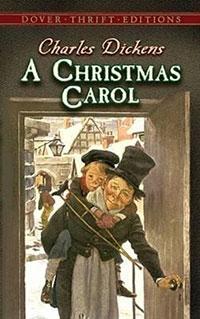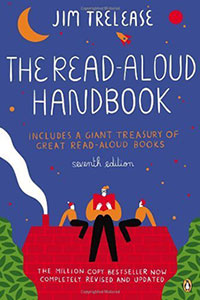 One might think that reading your own writing aloud—to an audience—is a straightforward, even simple thing. In fact, it is not. The writer who taught me that was Charles Dickens.
One might think that reading your own writing aloud—to an audience—is a straightforward, even simple thing. In fact, it is not. The writer who taught me that was Charles Dickens.
I had known about Dickens’ public readings. They were, apparently, famously superb, and attracted huge audiences. But it was a chance visit to New York City’s famed Morgan Library which taught me how he prepared for such performances.
On display was his reading script of A Christmas Carol, a work he often performed. It consisted of a published edition of his book. But here was the revelation: he had altered the written text into a performing text.
He took out the “he saids” and “she saids”—because he could differentiate character voices sufficiently with his voice. He cut parts of the expository text where it went on too long. He cut text so as to intensify the action. He added text to help his audience understand what was happening.
The key message was this: an audience that LISTENS to text responds differently than an individual READING text.
I suspect that most librarians and teachers—and even authors—who read text, even of their own composition, feel duty–bound to respect the text to the ultimate degree, sharing each and every word. Take it from Dickens: that’s not so.

Also, before I began to do readings—either solo performances, or with a group such as Authors Readers Theatre—I took voice lessons. I found a class called “Voice for Actors.” Wonderfully helpful. Among other things I learned:
How to stand.
How to pitch your voice so as to maximize emotional value.
How to pace oneself, not just as a performer, but so an audience can absorb what you are saying.
How to alter the voice for different characters.
 I hasten to say this is all about methodology, not any particular skill.
I hasten to say this is all about methodology, not any particular skill.
Finally, consult a good reference such as The Read Aloud Handbook by Jim Trelease. Such a guide understands that some books read aloud better than others.
I promise that if you consider all of this, and do it, you can fully engage your audience with reading.
6 thoughts on “Tips for Reading Aloud”
Good stuff, Avi. I advise all authors who do school visits to take voice lessons. Knowing how to project your voice ( and PROTECT you voice) makes doing the visits much more enjoyable!
I could consider myself a “professional” read aloud-er. I was a teacher for 41 years and still sub. I developed the skill over time. I listen to poets doing reading. Adult readers to adult audiences are sometimes too dry for my tastes, but for children and for a performance to captivate the readers, well, all you say is so important. And the way we write and how it is read aloud does differ. Jim Trelease’s book is a great resource. Thanks for this. I would love to see the Charles Dickens reading script.
Great ideas! Reading with different voices for each character is effective and also entertaining for adults who can look glazed over by authors who just open and read without considering that the audience sometimes has no idea of how the story relates to their lives.
From the NYPL:
“Charles Dickens could not only write a crackling good story, he could perform it. And so in 1853, he took his Christmas Carol show on the road, first in Britain and then in the United States. Audiences loved it. Dickens didn’t simply read from his book. He transformed it into a stageworthy script—cutting, pasting together pages of excised passages, adding stage cues for himself, rewriting, then cutting some more.
Such an annotated stage copy is called a prompt copy. There is only one such copy of A Christmas Carol, created by Dickens himself, and The New York Public Library has it. Levenger partnered with the Library to bring you, for the first time, a full-color facsimile of it, revealing all of Dickens’s handwritten markings. A new introduction by Library curator Isaac Gewirtz gives the backstory on how Dickens used this book, and a transcription of his emended text means you—or a showman you love—can read aloud A Christmas Carol much as the author did. It’s a rare Christmas treasure and a new way to savor this timeless tale.
224 pages, full-color facsimile. Published by Levenger Press, 2009.
Hardcover. $48.00. ISBN 978–1‑929154–39‑5.”
Ah, thanks for this, Avi. I was pretty sure I had remembered seeing a facsimile copy of the reading script. Good to know where to find it!
Listening to NPR’s Selected Shorts read by professional actors, I became aware of how much better some are at it than others. All these actors do great work with movie dialogue, but reading stories is a special skill as well.
Even more so for writers.